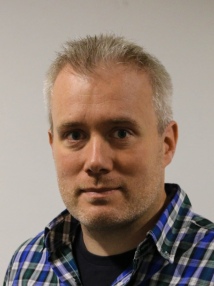Research Overview
My research focuses on the effect of high pressure on the structure and micromechanics of biological systems, and dynamic structural changes in soft condensed matter. Coupled to these research aims, I have a strong interest in advanced instrumentation and technique development. I am co-director of the Membrane Biophysics Group, that I run in collaboration with with Prof John Seddon, Dr Oscar Ces, Dr Rob Law and Dr Yuval Elani at Imperial.
Hydrostatic pressure is both highly important in the biology of deep sea organisms and as a physical and tool which can be used as a rapid structure change trigger. Pressure can induce a vast range of structural changes in soft matter and biological systems from controlling protein folding to inducing phase changes in model membranes which mimic vital cellular processes. In fact any change that involves a volume reduction can be promoted by pressure. In contrast to other structure change triggers such as temperature, pressure can be changed very quickly and equally fast both up and down; fast pressure-jumps (around 5 ms) allow the thermodynamic trigger to be decoupled from many structural changes and by combining pressure-jump technology with fast structure probe techniques we can study a wide range of dynamic out-of-equilibrium structural behaviour. Despite great advantages over other structure change initiators, high pressure remains underutilised, primarily due to its technical difficulty. To address this, we have developed two user friendly pressure-jump platforms: (1) Within the Membrane Biophysics Platform, we have developed a pressure-jump system for small and wide angle X-ray diffraction in collaboration with Diamond Light Source. This system is now based at beamline I22 at Diamond and is freely available to beamline users. (2) We have recently extended this technology to develop a versatile pressure jump microscopy and spectroscopy platforms allowing in-lab access to time resolved high pressure structural studies. These unique platforms offers 2-dimensional imaging and high temporal resolution using a range of advanced microscopy and spectroscopy techniques.These versatile high pressure systems have facilitated recent collaborative research projects in fuel technology, cell biology and plant science (see publications section).
INVITED LECTURES AND PRESENTATIONS

Recent Invited Talks:
August 2017, International Union of Crystallography Congress, Hyderabad, India
September 2016, European High Pressure Research Group, Bayreuth, Germany
Keynote talk: ‘Pressure jump: Triggering dynamic structural changes in model lipid membranes’
July 2016, Teluride Science Research Centre, Colorado, ‘High pressure response of complex model membranes’
July 2016, Diamond Light Source Seminar Series, ‘Coupling small angle X-ray scattering and optical microscopy under high pressure’
May 2016, International School of Crystallography, Erice, Italy, ‘Model membranes and high pressure SAXS’
February 2016, International Meeting on Biomolecules Under Pressure, Dortmund, Germany, ‘Triggering lateral membrane structuring with high pressure’
September 2015, International Union of Crystallography High Pressure Commission Conference, Campinas, Brazil, ‘Triggering structural changes in model membranes’
March 2015, Invited seminar at Institute Pasteur, Paris, ‘Lateral Structure Changes in Lipid Membranes’
December 2014, London Chemical Biology Colloquium, ‘Triggering Dynamic Structural Changes in Model Lipid Membranes Using High Pressure’
November 2014, “Life at Extreme Conditions” Physics of Life Network workshop, Leeds, ‘Probing lipid membrane structure and dynamics at high pressure’
July 2014, “Bicontinuous Cubics 2014” conference, Noosa, Australia, ‘Lipid ordering in bicontinuous cubic phases’
February 2014, ESRF User Meeting, ‘Triggering Dynamic Structural Changes in Model Lipid Membranes’

